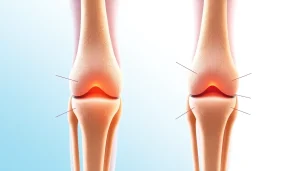Navigating VDAP: A Comprehensive Guide for Alabama Nurses

Understanding VDAP for Nurses
The Voluntary Disciplinary Alternative Program (VDAP) provides a key support mechanism for nurses in Alabama facing challenges related to substance use or mental health. This program, recognized by the Alabama Board of Nursing, aims to promote early intervention and assistance for licensed nurses instead of imposing outright disciplinary actions. For nurses navigating these difficulties, understanding the nuances of VDAP is essential to securing their careers and overall well-being. This program not only offers treatment options but also emphasizes rehabilitation, making it a significant resource in the healthcare community. For more detailed information about the complexities of VDAP, you can visit VDAP.
What is the VDAP?
VDAP is designed specifically for nurses in Alabama who admit to issues related to substance use or mental health challenges. By participating in VDAP, nurses can avoid disciplinary action on their nursing licenses while receiving the necessary treatment and support. This program aims to facilitate early intervention, putting nurses on a path to recovery while helping to maintain the integrity of the nursing profession. The program operates under the principles of confidentiality and voluntary admission, which encourages nurses to seek help without fear of losing their licenses.
Eligibility Criteria for VDAP
Not every nurse will qualify for VDAP, and potential participants must meet certain eligibility criteria. To be considered, a nurse must:
- Be a licensed nurse in the state of Alabama.
- Voluntarily admit to substance use or mental health issues.
- Agree to participate in treatment and monitoring programs as required.
- Not be currently undergoing disciplinary action from the Board of Nursing.
Meeting these criteria can open the door to valuable resources and support, but it’s essential for each nurse to understand the full implications of entering the program.
Benefits of Participating in VDAP
Engaging with the VDAP offers numerous benefits that can propel the nurse back into a productive career:
- Protection of Licensure: By participating in the VDAP, nurses can avoid formal disciplinary action, which helps protect their ongoing licensure.
- Personalized Treatment: VDAP provides tailored treatment plans that address individual needs, facilitating better recovery outcomes.
- Confidentiality: Participation in the program is confidential, allowing nurses to seek help without public scrutiny.
- Supportive Environment: Nurses are given access to support networks with peers who understand their challenges, fostering a sense of community and engagement in recovery.
Common Misconceptions about VDAP
Despite its benefits, several misconceptions surround the VDAP that can deter eligible nurses from seeking help. Dispelling these myths is crucial for ensuring that nurses are adequately informed before making significant decisions about their careers.
Debunking Myths about VDAP Participation
One common myth is that entering VDAP equates to admitting failure. In reality, it is an act of courage that shows a commitment to recovery. Here are a few prevalent myths:
- Myth 1: Participation leads directly to loss of licensure. Fact: As mentioned, VDAP is designed to protect the nurse’s license while they receive support.
- Myth 2: VDAP is a punishment, not a help. Fact: The program aims to assist nurses in addressing their challenges rather than condemning them.
- Myth 3: Only severely impaired nurses can participate. Fact: Nurses at various stages of struggle can seek help; it’s about recognizing a need and taking action.
Legal Implications of VDAP
Understanding the legal framework governing the VDAP is crucial. For participating nurses, the implications can include the following:
- Maintaining a record of participation that can be beneficial should any issues arise regarding their practice.
- Having a structured pathway helps protect the nurse by legally acknowledging their efforts to seek help.
- Involvement in the program can demonstrate a proactive approach in managing personal health challenges, which can be viewed favorably in legal contexts.
Real Stories: Nurses and VDAP
Numerous nurses have shared their transformative experiences with VDAP. One case involved a nurse who faced severe anxiety and substance-related issues but chose to enter the program after a lapse in judgment. Through VDAP, she underwent counseling and monitoring, ultimately reintegrating into nursing with renewed vigor and commitment. Such narratives underscore the importance of the program and its ability to change lives positively.
Navigating the VDAP Enrollment Process
Understanding how to enter VDAP effectively is vital for interested nurses. The enrollment process entails several important steps and requirements.
Steps to Enroll in VDAP
The steps for enrollment in VDAP typically include the following:
- Self-Assessment: The first step involves a self-assessment to determine readiness for treatment and acknowledgment of the problem.
- Contact VDAP: Nurses must reach out to the VDAP program. This can be done by contacting the Alabama Board of Nursing or visiting their website.
- Submit Application: Nurses need to complete and submit the VDAP application, which will include a consent for release of information for treatment providers.
- Assessment Interview: A meeting with a VDAP representative will follow to discuss the details and outline the treatment plan.
- Start Treatment: Upon acceptance into the program, the nurse can begin their treatment and monitoring schedule.
Required Documentation for VDAP
To streamline the application process, nurses will need to gather several documents:
- A completed application form for VDAP.
- Proof of current Alabama nursing license.
- Records of any previous treatment or counseling, if applicable.
- Personal identification, which can include a driver’s license or Social Security card.
Tips for a Successful Application
Here are some actionable tips to enhance the chances of a successful application to VDAP:
- Be Honest: Full transparency about your situation can help tailor the program to your needs more effectively.
- Gather Necessary Documentation Early: Ensuring all needed paperwork is in order can expedite the enrollment process.
- Engage with Support Systems: Utilize the support of peers or counselors while going through this process for invaluable moral support.
Challenges Faced by Nurses in the VDAP
While the benefits of the VDAP are clear, nurses may encounter unique challenges during their time in the program. Understanding these obstacles and strategies for managing them is vital for success.
Understanding Compliance Requirements
Participating in VDAP is contingent upon adhering to specific compliance requirements that may include:
- Regular attendance at treatment sessions and meetings.
- Mandatory drug screenings or other testing as prescribed by the program.
- Submission of progress reports by treatment providers to the VDAP committee.
Being diligent about these requirements is essential for program success and reintegration into the nursing field.
Addressing Treatment and Monitoring Issues
Some nurses may find the treatment and monitoring process to be overly rigorous or stressful. To mitigate these issues, consider implementing self-care techniques, such as stress-reduction practices like meditation or exercise. Additionally, establishing open communication with treatment providers to express concerns and adjustments needed can lead to a more manageable experience.
How to Overcome Obstacles in VDAP
Navigating VDAP can be daunting, but overcoming challenges is possible with the right approach. Building a robust support system, seeking group therapy sessions, and remaining actively engaged in one’s recovery can make significant differences in one’s journey through the program. Furthermore, understanding that setbacks can occur and approaching them as learning opportunities rather than failures is vital for long-term success.
Post-VDAP: What Comes Next?
Completing VDAP is an important milestone, but it marks the beginning of a new chapter for many nurses. Understanding what comes next can help ease the transition.
Reintegration into Nursing After VDAP
Once a nurse successfully completes VDAP, the process of reintegration into nursing roles begins. This can involve:
- Networking with peers to identify job opportunities in supportive environments.
- Seeking out positions in specific healthcare settings that prioritize rehabilitation and support.
- Consulting with the Alabama Board of Nursing for guidance on license renewal requirements following program completion.
Continued Support Networks for Nurses
Upon leaving VDAP, ongoing support is crucial. Nurses should consider joining networks or groups that focus on recovery and mental health. Support networks provide not only reassurance but also a platform for sharing experiences and strategies for maintaining sobriety and mental well-being.
Maintaining Long-Term Health Post-VDAP
Long-term health after VDAP necessitates continued vigilance in self-care practices. Nurses should prioritize their mental and physical health by engaging in supportive activities, maintaining regular communication with counselors, and implementing stress-management techniques. Establishing a balanced routine that promotes both professional and personal well-being is vital to sustaining recovery and fulfilling career aspirations.







